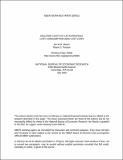Welfare Costs of Catastrophes: Lost Consumption and Lost Lives
Author(s)
Martin, Ian WR; Pindyck, Robert S
DownloadSubmitted version (317.5Kb)
Open Access Policy
Open Access Policy
Creative Commons Attribution-Noncommercial-Share Alike
Terms of use
Metadata
Show full item recordAbstract
<jats:title>Abstract</jats:title>
<jats:p>Most of the literature on the economics of catastrophes assumes that such events cause a reduction in the stream of consumption, as opposed to widespread fatalities. Here we show how to incorporate death in a model of catastrophe avoidance, and how a catastrophic loss of life can be expressed as a welfare-equivalent drop in consumption. We examine how potential fatalities affect the policy interdependence of catastrophic events and ‘willingness to pay’ (WTP) to avoid them. Using estimates of the ‘value of a statistical life’ (VSL), we find the WTP to avoid major pandemics, and show that it is large (10% or more of annual consumption) and partly driven by the risk of macroeconomic contractions. Likewise, the risk of pandemics significantly increases the WTP to reduce consumption risk. Our work links the VSL and consumption disaster literatures.</jats:p>
Date issued
2021Department
Sloan School of ManagementJournal
Economic Journal
Publisher
Oxford University Press (OUP)